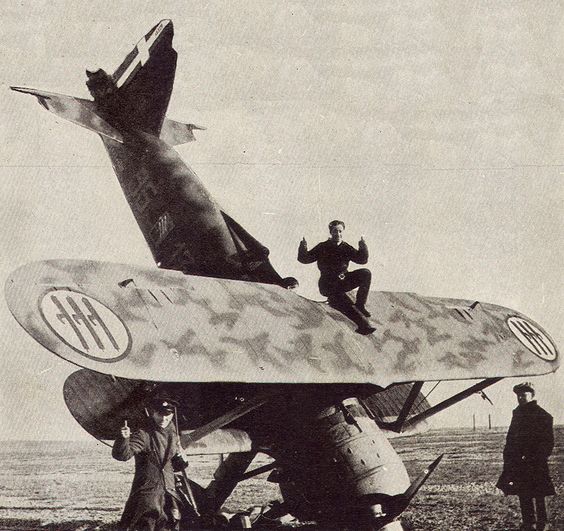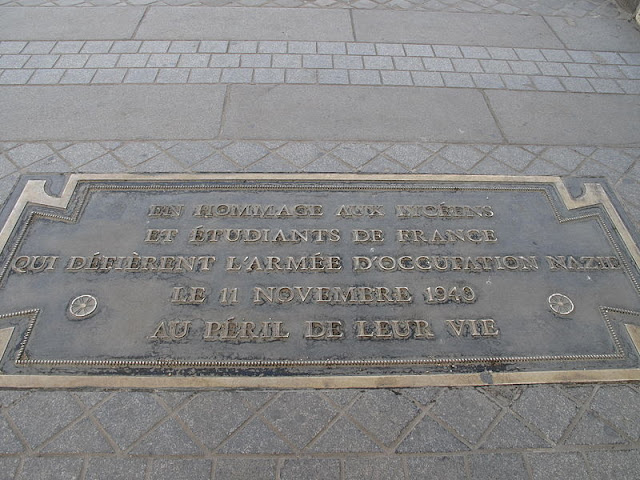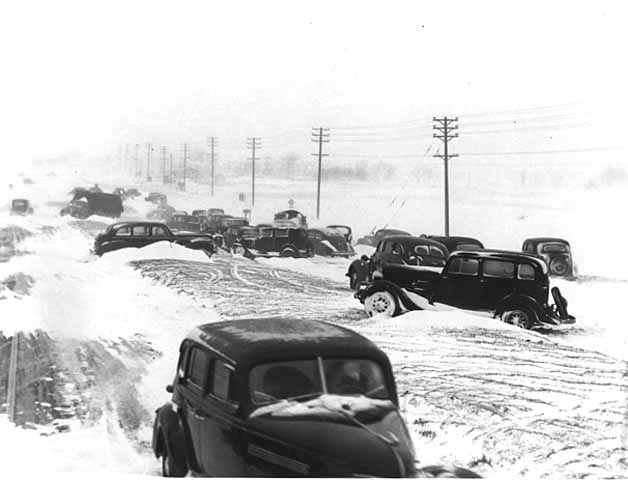Tuesday 11 February 1941
 |
| German Panzers arriving in Tripoli, 1941. |
The Greeks are looking at the Bulgarian border and considering their own defensive military options. The Italians, meanwhile, are determined to defend the key port of Valona (Vlorë and are planning another counteroffensive in the next few days. To date, Italian counteroffensives in Greece have been unmitigated disasters, making no progress and winding up costing the Italians territory. However, the contest for the Trebeshina Heights near the Klisura Pass has produced some minor defensive successes for the Italians, who are fighting much better now than earlier in the campaign.
East African Campaign: The battle at Keren, Eritrea continues. British Indian troops are faced with the tactical problem of forcing their way through the narrow Dongolaas Gorge in order to enter the Keren Plateau. The 3/1st Punjab Regiment takes the top of Sanchil, a low peak overlooking the gorge and have men on the sides of Brig's Peak next to it. However, the Indians are faced with murderous crossfire from both sides of the gorge, as the Italians occupy the heights all around them. While they might be able to hold their ground despite this, the approaches to the peaks are flat ground which exposes anyone crossing it to machine gunfire. Thus, no matter how much they bring with them, the Indians eventually run low on supplies. The Italians rain mortar and artillery fire on the Indian troops throughout the day. Finally, the Italian Savoia Grenadiers advances on the Indian troops and forces them off of both Brig's Peak and Sanchil.
By day's end, the Indian troops wind up back where they started at Cameron Ridge. This reversal, identical to the first attempt to take the peaks several days before, does not interfere with plans to attack the other (right) side of the gorge on the 12th.
In Italian Somaliland, South African and Gold Coast troops (East African 22nd Infantry Brigade) complete the capture of Afmadu at the north end of the Juba River. The South African Air Force heavily supports these attacks.
European Air Operations: RAF Bomber Command sends 79 bombers against Bremen and 29 against Hanover during the night. There are other RAF operations as well during the day, including a Coastal Command attack on the seaplane base at Thisted, Jutland. There also are some Circus offensive RAF operations over northern France.
The day is notable for the first RAF attack by four-engine bombers. Three Short Stirlings bomb the docks at Rotterdam.
The Luftwaffe mainly stays on the ground today, as has been the practice for much of 1941 so far. A few bombs are dropped in the east and southeast of England, while the Luftwaffe attacks shipping off the Scottish coast.
An American, James Alton Jepson of Decatur, Georgia, has been serving with the Royal Canadian Air Force as an observer. Sergeant Jepson enlisted on 15 April 1940 in Ottawa, then was shipped to England with his unit. He goes missing today on a mission and is never found.
Royal Navy submarine HMS Snapper (Lt. G.V. Prowse) fires at German minesweepers M.2, M.13 and M.25 southwest of Ouessant, Finistère, France in the Bay of Biscay. The attack fails, and the German ships attack and sink Snapper. At least, this is believed to have been her fate, as none of the 41 men aboard survived to tell the tale. Another theory is that she hit a mine.
Operating between Portugal and the Azores, German battlecruiser Admiral Hipper encounters 1236-ton British freighter Iceland. Iceland is from Convoy HX 53, which already has been savaged by U-boat and Luftwaffe attacks and dispersed. Hipper makes short work of Iceland with its guns. In the evening, Hipper spots Convoy SLS 64 (19 ships) out of Freetown and stalks it through the night.
The Luftwaffe attacks 227-ton British trawler Eamont off the coast of northern Scotland. All ten men aboard take to the boats and survive, but the abandoned ship is run ashore by the winds and current and wrecked.
The Luftwaffe also bombs and sinks 215-ton British trawler John Dunkin 13 miles northeast of Buckie, Aberdeenshire. There is one death.
In a related attack nearby, the Luftwaffe attacks 488-ton British freighter Cantick Head and damages it.
Minelayer HMS Plover lays minefield ZME 16 in the Irish Sea.
Convoy OB 285 departs from Liverpool.
Royal Navy submarine HMS Ultimatum is launched.
US destroyers USS Aaron Ward and Buchanan are laid down.
U-68 (Kapitänleutnant Karl-Friedrich Merten) is commissioned, U-80 is launched.
 |
| A burning Italian CR 42 biplane fighter. The original caption said that it was hit during aerial combat over Tobruk. El Adem, 11 February 1941. |
The British decision to halt their offensive is made just in time - for the Wehrmacht. Today, the German convoy which departed from Naples with a stopover in Palermo arrives in Tripolitania as part of Operation Sunflower (Unternehmen Sonnenblume). The transports carry troops of the 5th Light Division, the vanguard of General Erwin Rommel's Deutsches Afrikakorps (DAK). This is the first time that German troops have been on North African soil. These troops would still be quite vulnerable before they are reinforced - if the British were to attack. Royal Navy submarine HMS Unique spots the troop convoy and attacks one of the ships, German transport Ankara, but misses. Allied attacks on troop convoys from Naples will be a prime cause of the DAK's issues in North Africa.
General Rommel, en route to Tripoli, arrives in Rome. German Propaganda Minister Joseph Goebbels has given him a camera and some color film, which Rommel intends to make use of.
The Italians never wanted the Germans involved in their "empire" of North Africa, but the situation has changed drastically over the past few months due to Italian reversals there and in Albania. Mussolini accepts the resignation of Libyan commander Rodolfo Graziani, who flies out of Tripoli today. He is replaced by the Italian 5th Army (Tripolitania) Commander General Italo Gariboldi.
Australian Prime Minister Robert Menzies resumes his extended journey from Melbourne to London. He arrives today in Benghazi, where he meets with General Iven Mackay, commander of the Australian 6th Infantry Division. This division captured Bardia, Tobruk, and Benghazi, and Menzies somewhat cattily comments in his diary that the General's "tactics are highly praised, but [he] looks as gently ineffectual as ever." He dines with General O'Connor, commander of XIII Corps, of whom he notes:
He did this job [conquer Cyrenaica], but Wavell has received all the credit.... Wavell will probably get a peerage while this man gets a CB but that is the way of the world.Menzies notes that life has changed little in Benghazi for the residents there, with "good Australians slapping down their money on the bar of a hotel conducted by a 'conquered' Italian."
The Royal Navy begins Operation Shelford, the clearing of Benghazi Harbor by minesweepers. A similar operation at Tobruk was a disaster, with several ships hitting mines after the port was declared free of mines. In fact, today 344-ton naval whaler HMSAS Southern Floe hits a mine off Tobruk and sinks, killing everybody on board (mostly South Africans) but one rating.
At Malta, there are some minor Luftwaffe attacks on St. Paul's Bay that cause minor damage to a seaplane base and petrol lighter. Antiaircraft fire downs a Junkers Ju 88.
Two Malta-based RAF reconnaissance pilots, Flying Officer Adrian Warburton of 431 Flight (now 69 Squadron) and his observer/navigator, Sergeant Frank Bastard, are decorated. Warburton receives the DFC, while Bastard receives the Distinguished Flying Medal. Bastard is the navigator who took over as pilot (without any training) and successfully landed the plane after the pilot (apparently Warburton) was rendered unconscious. As usual in the British military, the senior officer in such a situation invariably receives a plum award when a subordinate is decorated - as Menzies noted (see above), "that is the way of the world."
Free French forces under Leclerc take the Italian outpost Gadamis in southwestern Libya.
 |
| The body of an Italian soldier lies where he fell during battle, in a stone-walled fort in the West Libyan desert, on February 11, 1941. |
Battle of the Pacific: In the Dutch East Indies, the military authorities for some reason go on a high military alert. They suddenly close all ports to Japanese shipping, order Dutch vessels to safe waters, put the military on alert and take other actions. The Japanese are not planning anything, however.
Royal Navy destroyer HMS Thracian and minelayer HMS Man Yeung lay mines outside Hong Kong Harbor.
 |
| A 1941 Lincoln Continental. The Lincoln Continental was the idea of Henry Ford's son Edsel, who wanted something sporty to use on vacation. It originally was built as a one-off for him but was such a fine car that it went into limited production. This particular Lincoln, immaculately restored, was No. 290 of 400, built on 11 February 1941. This was the original model year, with only two dozen manufactured in 1939. All Continentals built 1939-41 are a single model year. |
Vichy French/German Relations: Rudolf Hilferding dies in a Gestapo dungeon in Paris. Hilferding is a prominent Jewish socialist from Austria who upon the accession of Hitler to power fled to Denmark, then Switzerland, then Paris. He would have been safe in Zurich, but he left there for Paris in 1939 (many expected Hitler to invade Switzerland in 1939). The Vichy French arrested him, and the Vichy government turned him over to the Gestapo on 9 February despite Hilferding securing an emergency visa to emigrate to the United States. The Gestapo tortured him at La Santé for two days, leading to his death. Hilferding's wife, Margarete, is sent to Theresienstadt concentration camp and perishes there in 1942.
Anglo/Italian Relations: Rumors are flying in Vichy France that Generalissimo Francisco Franco of Spain and Marshal Petain are trying to negotiate an Armistice between Great Britain and Italy. If this is the case, though, nothing seems to come of it.
 |
| "A sailor and his girlfriend are amongst the crowds listening to a speech by a member of the Socialist Party at Speakers' Corner, Hyde Park." While Winston Churchill attempts to suppress prominent socialists from speaking on the BBC, he is unconcerned about agitators in Hyde Park. February 1941. © IWM (D 2095). |
Churchill also complains to Minister of Shipping Ronald Cross about an incident involving a ship that refused to sail around from Liverpool to London. Agreeing with the captain's reasoning, Churchill points out the immense value of the ship's cargo to the war effort (19,677 sub-machine guns and about 2.5 million cartridges). Churchill notes that "I always follow the movements of these important cargoes."
US Government: President Roosevelt meets with U.S. Secretary of War Henry L. Stimson, U.S. Secretary of the Navy William "Frank" Knox, U.S. Chief of Naval Operations Admiral Harold R. Stark, and U.S. General of the Army George C. Marshall. Roosevelt suggests that the navy risk half a dozen cruisers and two aircraft carriers at Manila as bait to gt the Japanese to enter the war. Navy Chief of Operations replies:
I have previously opposed this and you have concurred as to its unwisdom. Particularly do I recall your remark in a previous conference when Mr. Hull suggested (more forces to Manila) and the question arose as to getting them out and your 100% reply, from my standpoint, was that you might not mind losing one or two cruisers, but that you did not want to take a chance on losing 5 or 6.This is contained in Charles Beard's "President Roosevelt and the Coming of War 1941 (2003), p 424. I can't find any confirmation for this claim, which is a favorite of conspiracy theorists. That doesn't mean it isn't factual, though.
Another outcome of this meeting is that the US government decides to warn American nationals in vulnerable Asian targets such as Rangoon, Burma, and Singapore to leave while they still can.
Wendell Willkie appears before the US Senate Foreign Relations Committee as the committee prepares to conclude its consideration of the Lend-Lease bill. He recommends passing the bill and quickly sending help to Great Britain because otherwise, the US would be at war with Germany within a month. Among his recommendations is that every American bomber in the US Army Air Corp should be sent at once to join the RAF, in addition to five or ten destroyers per month. Willkie does, however, suggest that specific time limits be attached to the President's exercise of lend-lease powers - this is a major concern of many, both within the government and outside it.
Willkie's opinion is given great weight because he just returned from a fact-finding mission in London for President Roosevelt - made at his own expense. Since Willkie was the 1940 Republican Presidential candidate, this suggests that who won that election really made little difference in the long-run course of events. After his testimony, Willkie continues his cozy relationship with his former opponent by meeting with him at the White House.
 |
| Look Magazine, 11 February 1941. |
Dutch Homefront: Tensions between local German supporters and those defending Jewish interests have been sparking over the last week. Pitched battles break out today in Amsterdam's Waterlooplein. Pro-German Dutch militia "Weerbaarheidsafdeling" (defense section) is prominent in these attacks, targeting the old Jewish section of the city. Those fighting against the WA are effective, mortally wounding WA member Hendrik Koot (he dies of his wounds on 14 February).
American Homefront: There is a major gas leak in South Philadelphia which erupts into an explosion and fire. A row of eight houses is destroyed on Greenwich Street. The lots are cleared, and the lots remain empty for many years, used by neighborhoods to park their cars or grow vegetables. At least four people die, including a policeman, James J. Clarke, trying to rescue a mother and her two daughters.
Future History: William M. Landham is born in Canton, Georgia. As "Sonny" Landham, he begins an acting career in adult films. He later turns to mainstream films, appearing in such classics as "The Warriors" (he's the subway cop whose legs are broken by Michael Beck), "Predator" and "48 Hours." He also acts in such series as "The A-Team" and "The Fall Guy." Landham achieves his greatest degree of fame by appearing in an episode of "Miami Vice" as Toad, one of Reb Brown's Violator gang in the episode "Viking Bikers from Hell." Sonny later attempts to run for political office in Georgia and Kentucky, but to date has not been elected.
 |
| Destruction in South Philadelphia, 11 February 1941. |
February 1941
February 1, 1941: US Military Reorganization
February 2, 1941: Wehrmacht Supermen
February 3, 1941: World Will Hold Its Breath
February 4, 1941: USO Forms
February 5, 1941: Hitler Thanks Irish Woman
February 6, 1941: Operation Sunflower
February 7, 1941: Fox Killed in the Open
February 8, 1941: Lend Lease Passes House
February 9, 1941: Give Us The Tools
February 10, 1941: Operation Colossus
February 11, 1941: Afrika Korps
February 12, 1941: Rommel in Africa
February 13, 1941: Operation Composition
February 14, 1941: Nomura in Washington
February 15, 1941: Churchill's Warning
February 16, 1941: Operation Adolphus
February 17, 1941: Invade Ireland?
February 18, 1941: Panzerwaffe Upgrade
February 19, 1941: Three Nights Blitz
February 20, 1941: Prien's Farewell
February 21, 1941: Swansea Blitz Ends
February 22, 1941: Amsterdam Pogrom
February 23, 1941: OB-288 Convoy Destruction
February 24, 1941: Okuda Spies
February 25, 1941: Mogadishu Taken
February 26, 1941: OB-290 Convoy Destruction
February 27, 1941: Operation Abstention
February 28, 1941: Ariets Warns Stalin
2020













